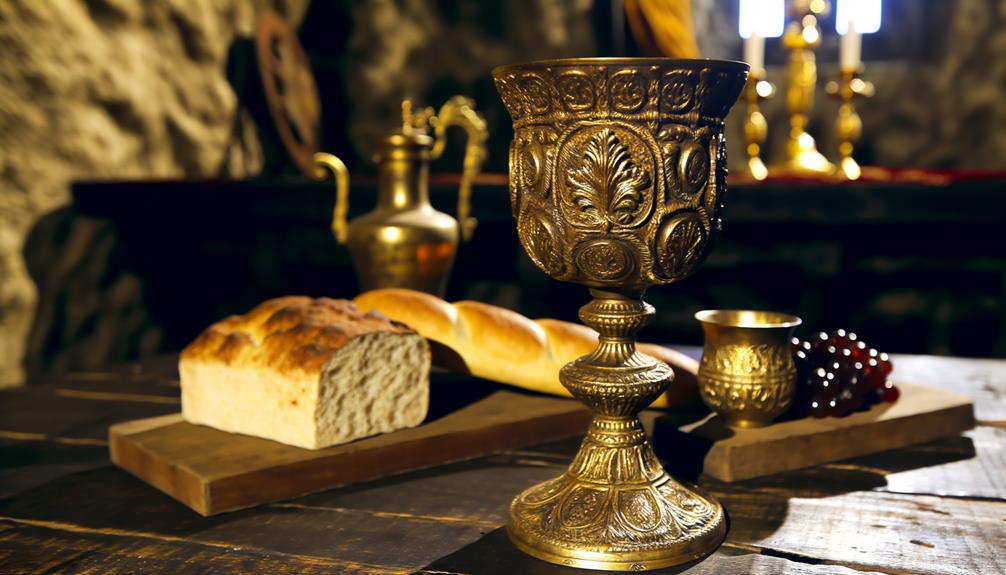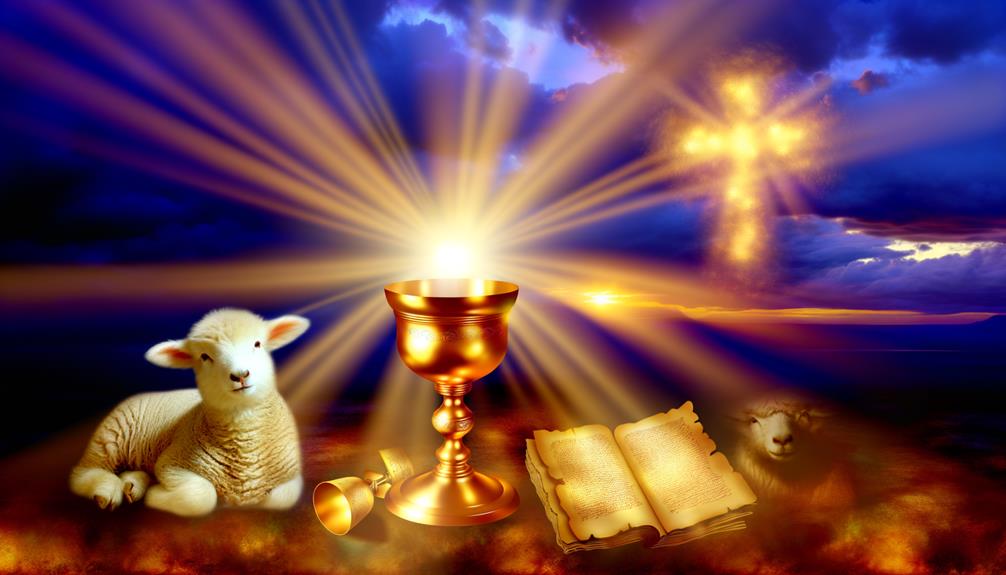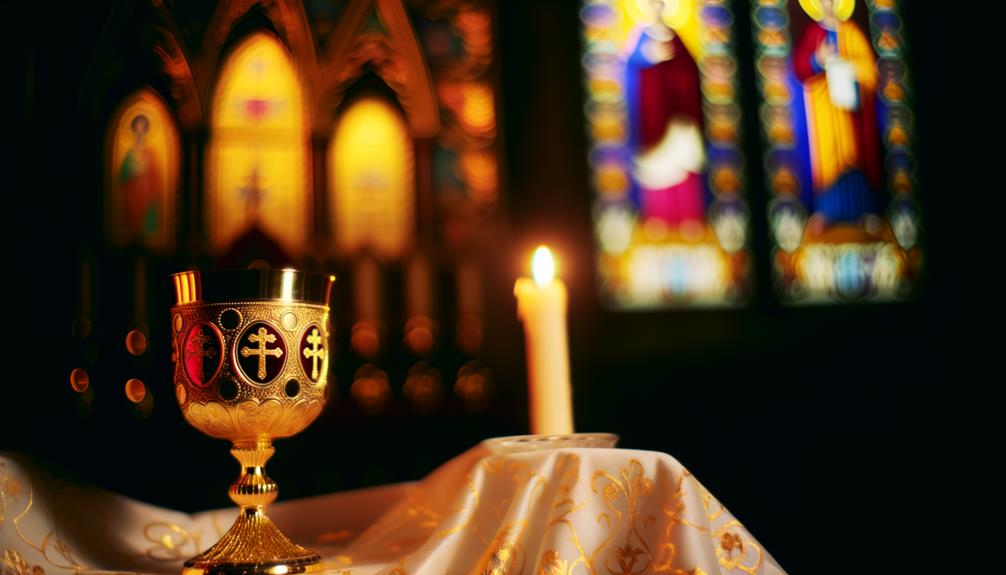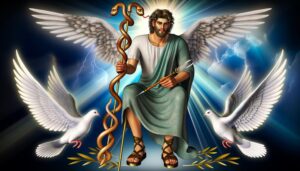Chalice Meaning in the Bible: Suffering and Blessing
In the Bible, the chalice represents various facets of divine interaction, ranging from blessing and protection to judgment and wrath. In the Psalms, it conveys spiritual fulfillment and divine retribution, embodying the sacred bond between God and believers.
At the Last Supper, the chalice containing Jesus’ blood established the New Covenant, symbolizing sacrificial love and divine grace in Christian liturgy. It reflects the continuity and fulfillment of God’s promises from the Old to the New Covenant, serving as a profound emblem in Holy Communion.
Exploring these layers reveals the chalice’s profound theological and symbolic significance.

Chalice Meaning in the Bible: Symbol of Covenant, Suffering, and Blessing
| Aspect | Details |
|---|---|
| Definition | A ceremonial cup or goblet, often representing a portion or fate |
| Key Bible Reference | Matthew 26:39 – “let this cup pass from me” (Jesus in Gethsemane) |
| Symbolic Meaning | Covenant, divine will, suffering, blessing, or wrath |
| Spiritual Insight | The chalice reflects one’s spiritual portion—either grace or judgment |
| Moral Lesson | Accepting God’s will may involve suffering, but it leads to eternal purpose |
The Chalice in the Old Testament

In the Old Scripture, the chalice, often referred to as a cup, serves as a multifaceted symbol that represents both divine blessing and judgement. This duality is vividly illustrated in the narratives of the Old Covenant.
For instance, in Psalm 16:5, the chalice symbolizes divine provision and protection: ‘The Lord is my chosen portion and my cup; you hold my lot.’
Conversely, in Isaiah 51:17, it denotes divine wrath: ‘Awake, awake, rise up, Jerusalem, you who have drunk from the hand of the Lord the cup of his wrath.’
Consequently, the chalice functions as a powerful metaphor, embodying the dual nature of God’s relationship with humanity—both nurturing and disciplinary, reflective of the complexities inherent in divine-human interactions.
Symbolism in the Psalms

The Psalms intricately weave the chalice as a symbol of divine communion, encompassing themes of both spiritual nourishment and the weight of divine judgment. Analyzing this symbolism requires understanding its multifaceted aspects:
- Spiritual Fulfillment: The chalice often signifies the overflowing blessings from God, as seen in Psalm 23:5: ‘My cup overflows.’
- Suffering and Judgment: Conversely, Psalms also depict the chalice as a vessel of divine wrath, particularly in Psalm 75:8, where the wicked drink from it.
- Covenantal Relationship: The chalice represents the sacred bond between God and believers.
- Redemptive Hope: It underscores the ultimate redemption offered by God, transforming suffering into salvation.
These elements collectively portray the chalice as a profound emblem within the Psalms.
The Last Supper’s Cup

Examining the chalice at the Last Supper reveals its pivotal role in symbolizing the New Covenant, as instituted by Jesus Christ. This act is captured in the Gospels, where Jesus offers the cup as His blood, signifying the sacrificial offering for humanity’s redemption. The chalice consequently becomes an emblem of divine grace and commitment.
| Context | Significance |
|---|---|
| Gospels | Represents Jesus’ blood |
| New Covenant | Symbol of divine grace and commitment |
| Sacramental Use | Central to Eucharistic traditions |
| Redemption | Indicates sacrificial offering |
| Historical Impact | Influenced Christian liturgy |
Through this sacred gesture, the chalice transcends its material form, embodying profound theological themes central to Christian belief, consequently shaping Christian liturgical practices and spirituality.
Sacrifice and Covenant

Central to understanding the concept of the chalice in biblical theology is its profound connection to the themes of sacrifice and covenant, which are pivotal in delineating the relationship between God and humanity.
The chalice symbolizes several key aspects:
- Divine Sacrifice: It represents Christ’s ultimate sacrifice for humanity’s redemption.
- New Covenant: It signifies the establishment of the New Covenant through Jesus’ blood.
- Ritual Importance: The chalice is integral in rituals, symbolizing communal participation in divine grace.
- Continuity of Promise: It connects Old Scriptures covenants with the New, highlighting continuity in God’s promises.
These elements underscore the chalice’s role as a vessel of profound theological meaning, embodying both historical and spiritual dimensions.
Chalice in Christian Theology

Understanding the chalice within Christian theology necessitates an exploration of its doctrinal significance and its role in liturgical practices.
The chalice, symbolizing the cup used by Jesus at the Last Supper, embodies the New Covenant in His blood. This is central to Eucharistic theology, where the chalice is more than a ritual object; it is a conduit through which believers partake in Christ’s sacrifice.
Its usage in the Holy Communion service underscores themes of redemption and unity among the faithful.
In addition, the chalice represents a call to discipleship, echoing Jesus’ invitation to ‘drink the cup’ of suffering and commitment.
Consequently, the chalice serves as a profound emblem of sacrificial love and communal faith in Christian doctrine.
Conclusion
The chalice, a vessel of seemingly humble origin, navigates the biblical narrative with a paradoxical grandeur.
From the Old Scriptures to the Last Supper, it oscillates between a symbol of divine wrath and a covenant of salvation.
The Psalms render it as an emblem of suffering and deliverance, while Christian theology elevates it to the quintessence of sacrificial love.
Consequently, this ordinary cup, in its biblical theatrics, encapsulates the profound mysteries of faith with an ironic splendor.






